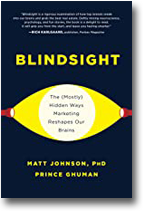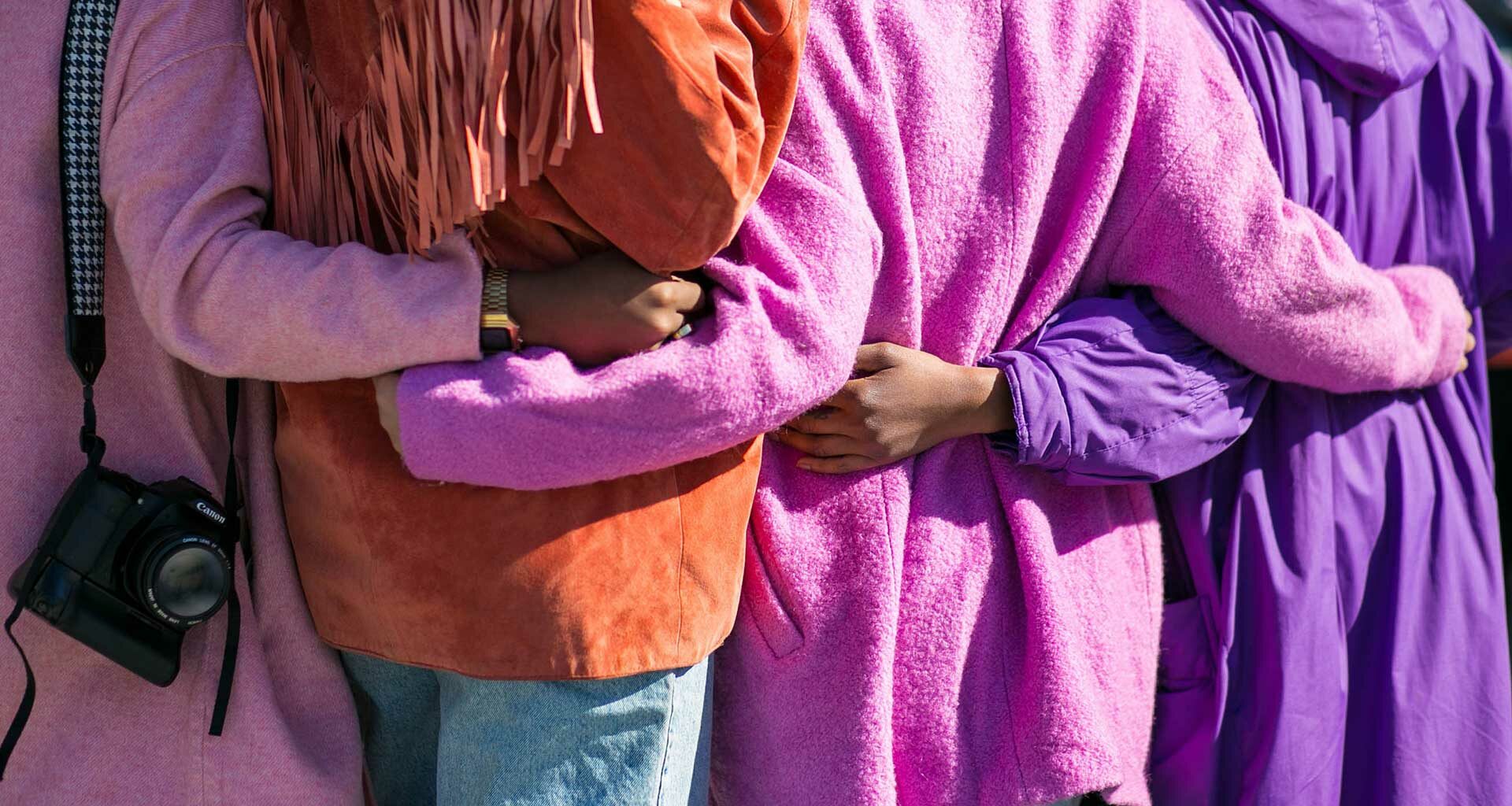This is part 3 of a 3-part series on how brands drive social cohesion, connectedness, and community through shared consumer experience.
In part 1, we saw how the economic divide has narrowed the opportunity for shared consumer experience. In part 2, we saw how this manifests both with in-person retail experiences and in the digital world. There’s a crucial question that has gone unanswered: Why is it important to have shared experiences?
By Matt Johnson, Phd., and Prince Ghuman
For one, they help us avoid social “echo chambers”, in which people interact with groups of people we already agree with. Whether online or in real-life, this homogeneity has a way of limiting our perspective and distorting our worldviews. It stagnates the psychology of otherness.
Research has found that these types of interactions make existing beliefs more ingrained, extreme, and emboldened. Author and Law Professor Cass Sunstein has done several empirical investigations on this phenomenon within the arena of political psychology. What happens when you put a group of people in the same room who are all moderately against an increase in the minimum wage? After deliberating about this amongst themselves, the group becomes even more opposed to increasing the minimum wage. People who favor stricter gun regulations want even stricter gun control laws; people who believe that global warming is a serious problem come to insist on more severe measures to prevent global warming. And so on. These echo-chambers can lead to extremism.
As Sunstein remarks, “In a striking empirical regularity, deliberation tends to move groups and the individuals who compose them, toward a more extreme point in the direction indicated by their own pre-deliberation judgments.” People become more entrenched in their existing beliefs and more intolerant towards different viewpoints.
Echo Chambers and the Importance of Shared Experiences
And the more siloed online communities become, the greater the risk they develop, and become entrenched within, their own epistemic universes. Put simply, a lack of shared experiences and interactions dissolve a shared interpretation of reality.
In contrast, research has found that having shared experiences with different people leads to more generosity, social cohesion, and greater prosociality.
Stanford Professor Sean Reardon studies the impact of poverty and inequality on education. In an interview cited in The Velvet Economy, he remarks that “Most families increasingly live in neighborhoods that are more homogenous economically than they were in the past. When children are raised in uniformly wealthy enclaves, it may limit their understanding and empathy for the life experiences of most of America. When we don’t have empathy, it makes it harder to feel like we have shared problems in society. It’s easy to feel like those are someone else’s problems.” (pg. 280)
To Reardon’s point, a growing body of research supports the benefits of economic heterogeneity in education. In an academic paper appropriately titled, “Familiarity does not breed contempt”, Gautam Rao examined the impact of mixing students of socioeconomic background in elementary schools in New Delhi. The impact on affluent students was clear: They were much less likely to discriminate against poorer students, and instead, were much more willing to socialize with them. Even more impressive, the rich students were also more prosocial, egalitarian, and generous, in general. In sum, exposure was positive for the entire community, for both rich and poor students.
Interestingly, research has found that experience interacting within an ethnically diverse community leads people to see ethnicities as more similar to one another. And in addition, greater experience different ethnicities as being more similar in terms of how warm and competent they are. In contrast, interacting with similar others leads people to see ethnic groups as being very distinct, with more differentiation rankings. One compelling way to view these results is that more heterogeneity leads to a recognition of our underlying, common humanity.
When the stakes are high enough, exposure to different people is a matter of life and death. Consider the following example from one of humanity’s darkest periods, The Holocaust.
Amidst the unspeakable evils, there emerged a ray of human triumph. Thousands of non-Jewish Europeans risked their lives and the lives of their family members to save Jewish people from persecution. The stakes could not have been higher. Those who were found out met a similar fate as the people they were trying to protect.
Decades later, sociologists, Samuel and Pearl Oliner studied these cases. Why did some people dehumanize their fellow humans while others risked everything to save them? The Jewish rescuers proved to be an incredibly diverse group, consisting of men and women, rich and poor, educated and uneducated. Superficially, they were an eclectic group. But what they found was a remarkably consistent throughline in their experience and upbringing: They all had close interactions with Jewish people, as neighbors, colleagues, or as close childhood friends.
A little social cohesion can go a long way.
The Future of Brands and Social Cohesion
So, where do we go from here? Can Netflix – the rare digitally native brand with a massive reach and hit shows that transcend socioeconomic divides save us with a koom-baya version of Tiger King? Would all our social ills be cured if we all simply had a Coke and a smile? That would solve social cohesion about as well as Kylie Jenner dolling out cans of Pepsi solved social justice.
There are clear limits to the amount of influence brands can have to bring Americans together in all seriousness. What’s clear is that brands can act as a cog within a vicious cycle: As society becomes more atomized, brands become more fragmented and specialized. And without shared experiences, society becomes even more atomized. And so on.
And yes, there is more to American culture than shared consumer experience. Artists and celebrities can have massive, unifying appeal as much as brands can. After all, Warhol was almost as fond of Marilyn Monroe as he was Coca-Cola. But reasonable or not, recent polling data reveals that consumers expect more from brands than ever before. It’s not enough for brands to create amazing products and deliver top-notch customer service. Brands now need to take an active role in curing society’s ills. For better or worse, corporations are seen as the 4th branch of the American government.
Appealing for social cohesion and shared principles isn’t guaranteed to be well received by any target consumer. And marketing to a broad, heterogeneous market is almost asking for it to fail. Despite these challenges, could there be an opportunity for a brand to capitalize on a void in the middle? Do a large enough subset of consumers, deep down, want to come out from their specialized subcultural enclaves and come together?
One brand that seems to be testing this idea is Jeep. During the 2021 SuperBowl, it launched its “The Middle” ad campaign, featuring a uniting figure of yesteryear: Bruce Springsteen. It’s a serious and somewhat somber ad, which launches in Lebanon, Kansas, the geographic center of America. With Springsteen driving through America (in a Jeep of course), the two-minute commercial continues talking about America’s metaphoric center – voicing a message of unity, togetherness, and commonality. It ends with a graphic of the U.S. a star in its center, with the text “To the ReUnited States of America”.
Clearly, no campaign is for everybody. Many likened it to 2014, when another American folk legend, Bob Dylan, “sold out” by doing a Super Bowl commercial for Chrysler (who also owns The Jeep Brand). Others fixated on the ad’s austere tone, with one Washington Post headline reading, “If Bruce Springsteen’s Jeep commercial doesn’t bum you out, congrats on the purchase of your new Jeep”.
But with 30 million views on YouTube in less than 24 hours, it resonated with some. And love it or hate it, you can see where it was trying to go. Of course, espousing unity at a tactical level is one thing, and actually creating shared consumer experience is another. But the fact that they attempted it (and likely predicated by good market research), means that there may still be demand for these ideals.
As we’ve seen, capitalizing on this spark and creating shared brand experiences can be a critical, cohesive force. At their best, brands can do more than passively reflect society’s divisions; they help reconcile them. In this way, we can come full circle with Vladimir Nabokov’s critique of brand logos as being beneath an artist’s ability. As Warhol recognized, they’re not merely corporate devices but symbols for the values that society holds most dear.
 Johnson and Ghuman are founders of “PopNeuro – a Neuromarketing Blog for the masses” and co-author of “Blindsight – The (mostly) hidden ways marketing reshapes our brains”. You can check out more of their writing here.
Johnson and Ghuman are founders of “PopNeuro – a Neuromarketing Blog for the masses” and co-author of “Blindsight – The (mostly) hidden ways marketing reshapes our brains”. You can check out more of their writing here.
Photo by Vonecia Carswell on Unsplash.












